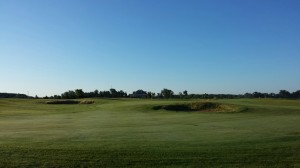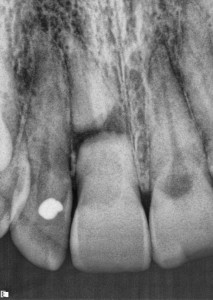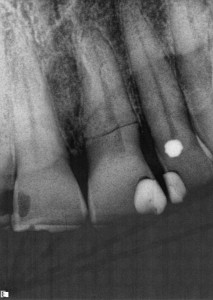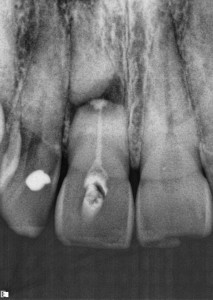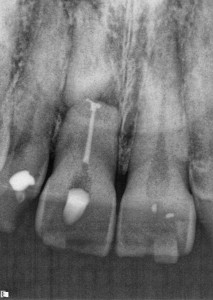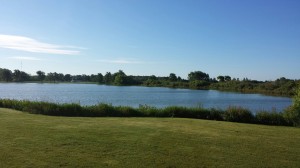I want to apologize for my delay in posting new cases. Golf season here in Northwest Ohio is a much shorter season than I had in Arizona. As such, I spend most of my free time on the golf course this time of year trying to get the most out of the summer. I don’t close the office, but as soon as I can get out into the fresh air, I make sure I do!
Trauma is one of the parts of endodontics that I really enjoy. Although accidents represent a very challenging situation for a patient and practitioner, it is something we don’t see often in adults. As such, it presents an opportunity for us to think through the complexities our patients face and snatch victory from the jaws of defeat. We aren’t always able to save teeth, but when we do, it is a great feeling. I differentiate between adults and children because youth (and more specifically apical diameter) is a huge factor in how well patients are able to recover from traumatic incidents.
I am going to back up before I get to the cases. I want to discuss a website that has been invaluable to me in learning about dental trauma: www.dentaltraumaguide.com . I don’t want to spend too much time on it, but it is the kind of site that anyone who is interested in dental trauma will find quite fascinating. It will assist you in identifying injury types, treatment recommendations and outcome assessments as well. I would encourage you to visit.
Both of the cases I want to discuss are fractured teeth. The first case presented as shown below:
Traumatic incident 25 yrs prior
No periodontal probings(tissue blanching upon probing)
No mobility
Sinus tract
Asymptomatic to percussion and palpation
Diagnosis: Necrotic pulp, Chronic apical abscess
Here is the second case:
Traumatic incident 2 months prior
Periodontal probings stopped at 3mm(no blanching noted)
+Mobility
Symptomatic to percussion and coronal palpation
Extreme cold sensitivity
Diagnosis: Symptomatic irreversible pulpitis, symptomatic apical(or midcoronal) periodontitis
Although these cases appear similar in that both teeth had horizontal root fractures, I believe that where the tooth was fractured made all the difference for these teeth long term. We were able to treat the first tooth without incident. At the first visit, we were able to instrument to the level of the abscess, place Calcium hydroxide and start a little internal bleaching.
The sinus tract resolved between visits, and so far the tooth has been doing great.
The second tooth, I declined to treat. Because the fracture communicates with the oral cavity, there are bacteria gaining access to the fracture site. As such, the intrinsic healing capability of the tooth is negated. Here is the way I see it:
If you recall Kakehashi, you know that in the absence of bacteria, the pulp was able to repair itself when it was injured. Now, obviously, bacteria are somewhere in the first case, as there is a sinus tract. But the apical segment of the fracture is calcified, and the periradicular lesion is limited to the coronal segment. Very likely, the bacteria that eventually infected the coronal segment came in some time after the apical segment had already calcified. In the second case, the bacteria are easily gaining access to both the coronal and apical segments. As such, there is persistent discomfort, mobility and there will be no healing of the apical segment by calcification. The final infection will include both the coronal and apical segments, and the prognosis is heavily guarded. In addition, treatment of the apical segment will be quite challenging. Replacement of the injured tooth with an implant is the best long term decision.
Sometimes we can do miraculous things, but when you look at the healing on this case, after 25+ years, there is no doubt that the human body is a miracle unto itself!
And now, time for more golf. Fore!
